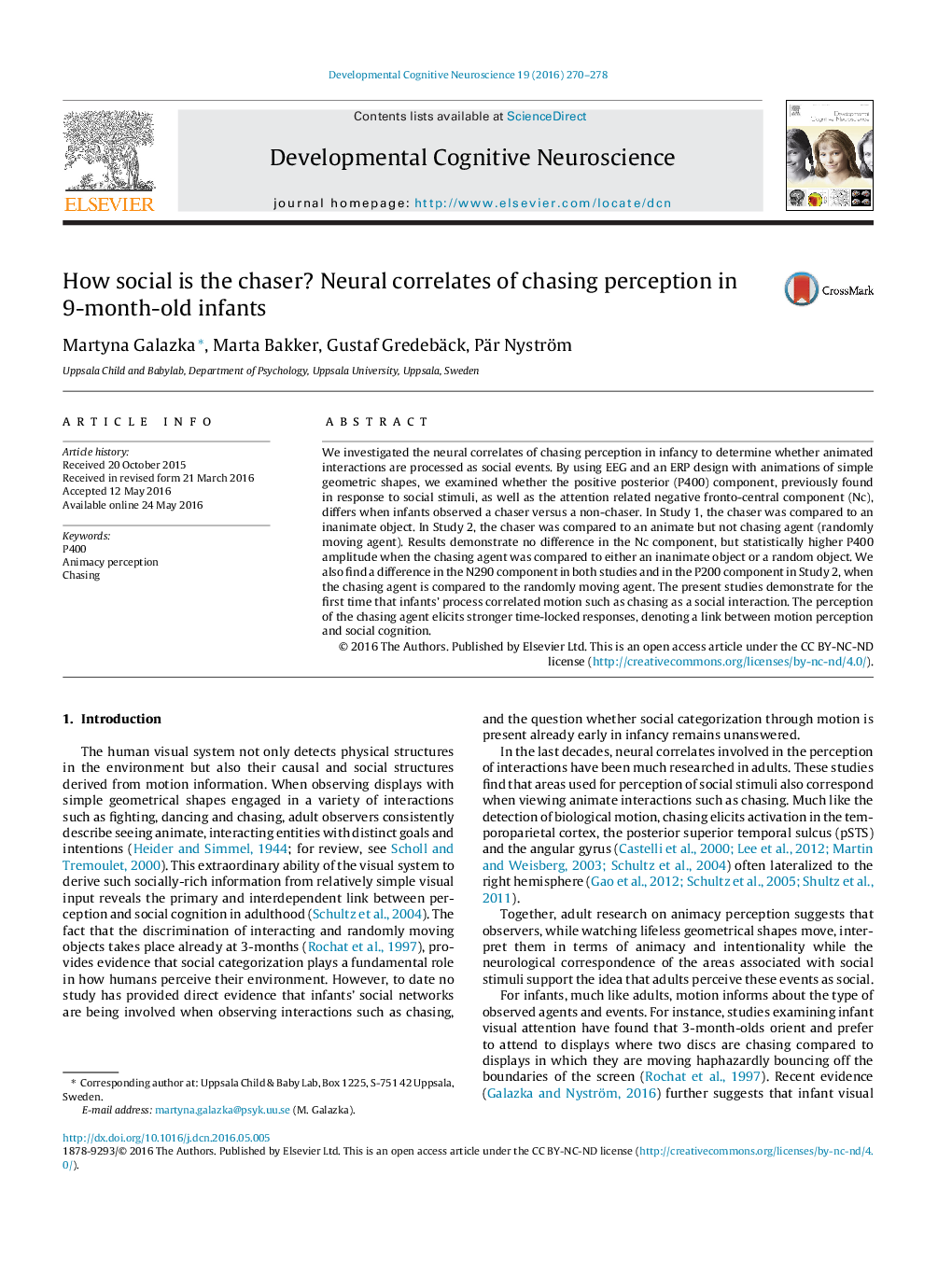| Article ID | Journal | Published Year | Pages | File Type |
|---|---|---|---|---|
| 4316453 | Developmental Cognitive Neuroscience | 2016 | 9 Pages |
We investigated the neural correlates of chasing perception in infancy to determine whether animated interactions are processed as social events. By using EEG and an ERP design with animations of simple geometric shapes, we examined whether the positive posterior (P400) component, previously found in response to social stimuli, as well as the attention related negative fronto-central component (Nc), differs when infants observed a chaser versus a non-chaser. In Study 1, the chaser was compared to an inanimate object. In Study 2, the chaser was compared to an animate but not chasing agent (randomly moving agent). Results demonstrate no difference in the Nc component, but statistically higher P400 amplitude when the chasing agent was compared to either an inanimate object or a random object. We also find a difference in the N290 component in both studies and in the P200 component in Study 2, when the chasing agent is compared to the randomly moving agent. The present studies demonstrate for the first time that infants’ process correlated motion such as chasing as a social interaction. The perception of the chasing agent elicits stronger time-locked responses, denoting a link between motion perception and social cognition.
